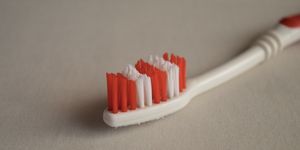Mimicking Cells With a Microfluidic Chip
Cell culture models are one way for scientists to learn more about biology. But cells grow in large cultures that are often studied or manipulated en masse. Researchers have now created an artificial model of a cell with microfluidic technology. This enables scientists to mimic and study individual biochemical processes in the cell or how they might react to different treatments.
Reporting in Advanced Materials, researchers have created miniature containers known as vesicles in which different synthetic systems take the place of living cells. This artificial system can mimic the subdivision of a cell into smaller compartments. Taken together, they model an entire cell, but individually, they can be manipulated.
"Unlike in the past, this is not based on the self-assembly of vesicles," explained Professor Wolfgang Meier of the Department of Chemistry at the University of Basel. “Rather, we've developed efficient microfluidic technology in order to produce enzyme-loaded vesicles in a controlled manner."
The components inside and the size of the artificial vesicle can now be controlled, and different reactions can be occurring in each one, without it impacting the vesicles around it.
These vesicles are created when various parts are loaded onto a silicon-glass chip. The microchannels of the chip are joined at a junction, and under the proper conditions, uniform droplets of a polymer will emerge at the junction where the channels intersect.
Using this method, the researchers generated three types of vesicles that all had uniform sizes, but which had different stuff inside. Water-soluble enzymes slowly converted starting material into the final product. Red vesicles contained β-galactosidase, green vesicles held glucose oxidase, while blue vesicles carried horseradish peroxidase, all enzymes. The enzymes generated Resorufin, a colored product that moved through the channels on the chip and into the surrounding solution.
The vesicles have a polymer membrane that can enclose different enzymes in an aqueous solution inside and act as a protective shell.
"The newly developed method allows us to produce tailor-made vesicles and to precisely adjust the desired combination of enzymes inside," said the first author of the study Dr. Elena C. dos Santos.
The membranes can accommodate proteins that act like various-sized pores, allowing only specific cargo in and out.
"We were able to show that the new system offers an excellent foundation for studying enzymatic reaction processes," said Professor Cornelia Palivan of the Department of Chemistry at the University of Basel.
"These processes can be optimized to boost the production of a desired final product. What's more, the technology allows us to examine specific mechanisms that play a role in metabolic diseases or that affect the reaction of certain drugs in the body."
Sources: AAAS/Eurekalert! via Swiss Nanoscience Institute, University of Basel, Advanced Materials








